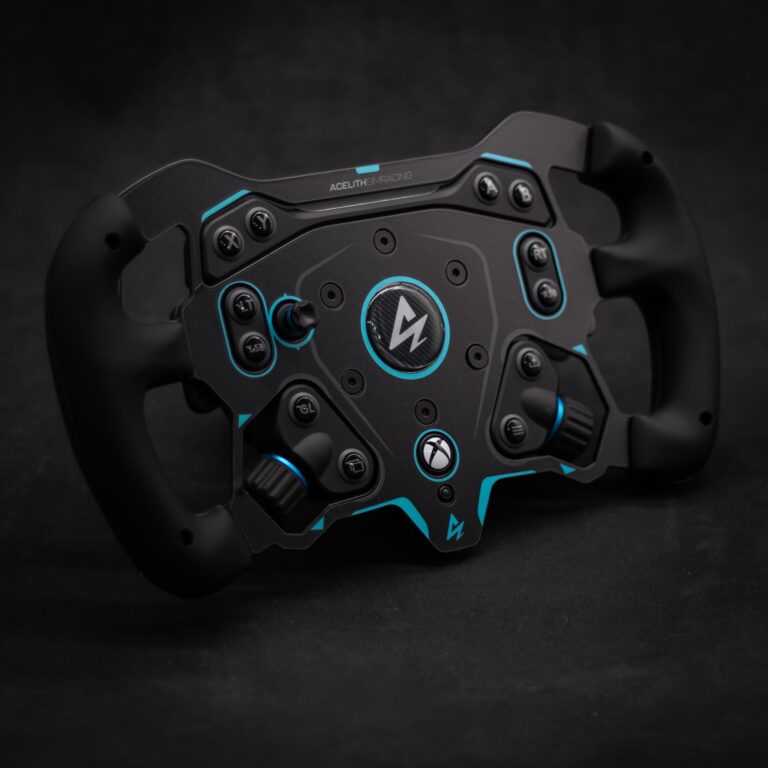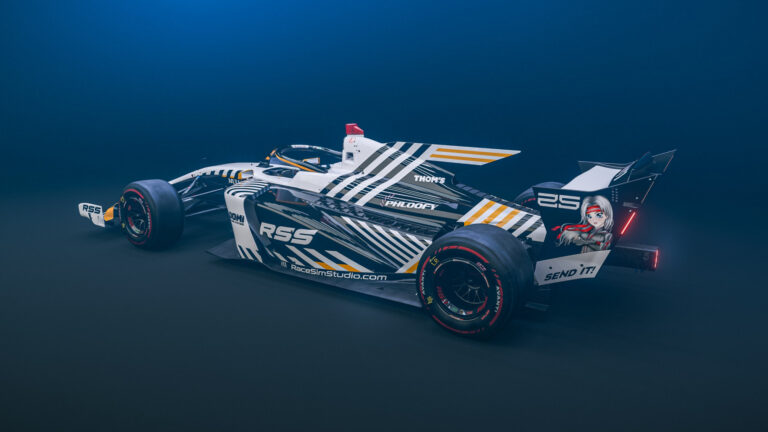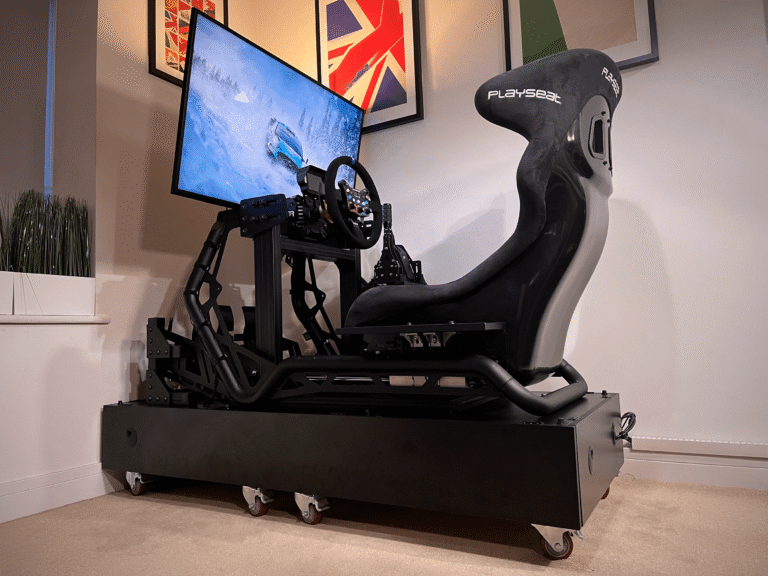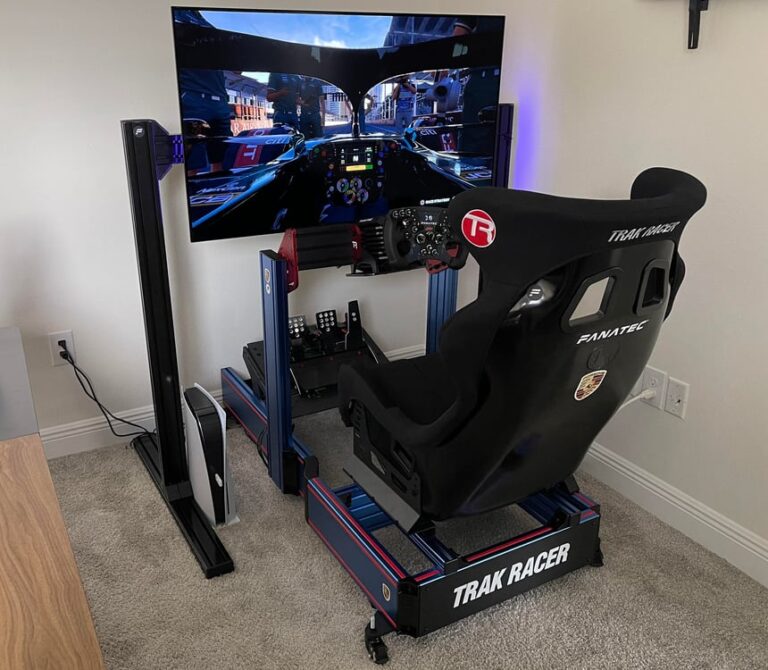Image credit: Ross McGregor
For years, I’ve been watching sim racers obsess over the wrong things. They’ll spend hundreds on the latest wheelbase or pedals whilst completely ignoring the fundamentals that actually make them faster. Marian from GITGUD Racing has been coaching sim racers daily for the past few years, and the patterns he’s identified in drivers who genuinely improve are fascinating – and somewhat uncomfortable if you’ve been spinning your wheels (pun intended) for months.
What caught my attention wasn’t another “top 10 tips” article. It was this Reddit post breaking down the truths about improvement that most content creators don’t say out loud. Having spent the better part of a decade testing everything from budget kit to professional-grade simulators, his insights align with what I’ve observed – but he’s articulated so well I wanted to write a quick post to share his insight.
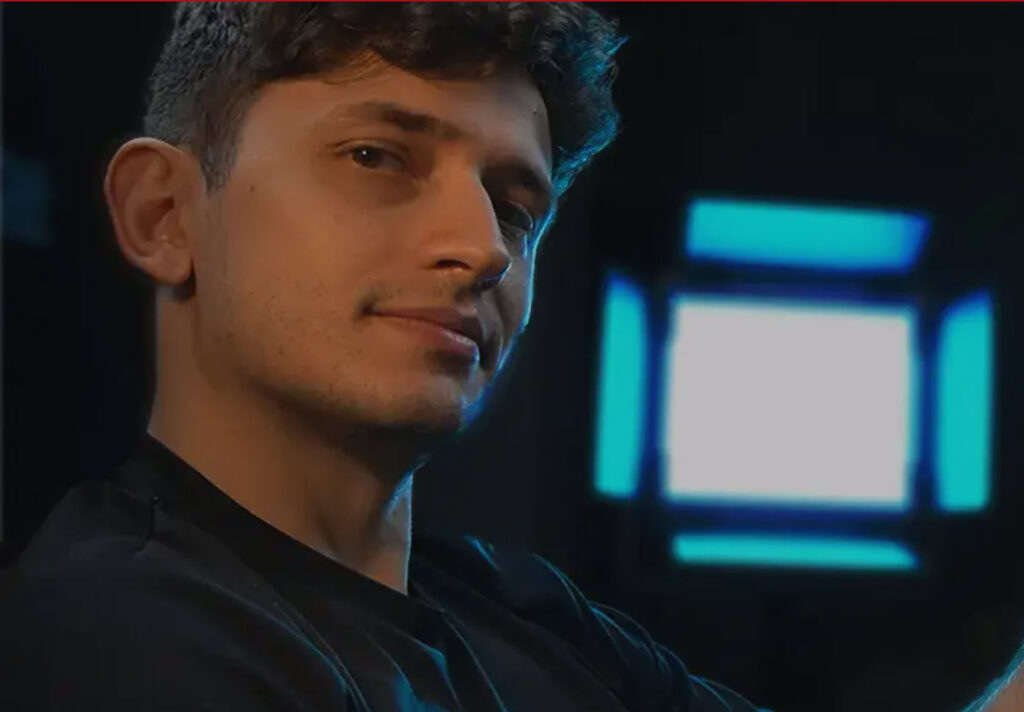
Driving Technique
Here’s something that’ll challenge everything you think you know: an improper technique that you’ve practiced for months will often be faster than the “correct” technique you’ve barely tried. Marian’s observation is brutal but accurate – most drivers who improve massively accept doing something that initially makes them slower because they recognise their current approach has hit a ceiling.
I’ve experienced this myself. When I first started experimenting with trail braking properly (not just lifting off the brake pedal gently, but actively using brake modulation through the apex), my lap times got worse before they improved. The temptation to revert to what felt comfortable was enormous. But the physics don’t lie – the old technique had maybe another half-second of improvement left in it. The new approach? Potentially seconds.
Bad Habits Cement Themselves
Our brains are remarkably efficient at turning repeated actions into habits. Marian uses a brilliant example: imagine you’re exiting a hairpin onto a long straight. You know those tiny throttle corrections you’re making – feathering it because it feels safe – are costing you time. Your exit should be one clean, committed throttle application.
But here’s the clever bit: instead of masking the problem with micro-corrections, press the throttle aggressively on purpose and see what happens. Wheelspin? Car pushing wide? That’s not a throttle problem – it’s revealing that your entry or mid-corner approach was wrong to begin with. You’ve just exposed the real issue instead of papering over it with bad habits.
As an aside this was one of the first things my driver coach taught me – get a bit out of shape on the outlap, find the grip, collect as much information about the car, its behaviour and the circuit as you can. That’s the prerequisite knowledge you need to improve.
That approach does need a bit of courage, of course. It means accepting that you’ll look slower on the timing screens whilst you’re learning. But the alternative is cementing bad habits so deeply that you’ll need months to unlearn them later.
The Telemetry Trap
I’ve fallen into this trap myself more times than I’d like to admit. You load up a top driver’s telemetry, see they’re braking 20 metres later than you, and think “right, I’ll just brake later.” Then you bin it into the gravel and wonder what went wrong.
Marian’s insight here is particularly sharp: those drivers can brake that late because their technique is exceptionally clean. They’ve spent years perfecting brake modulation, weight transfer, and rotation. Blindly copying their inputs when your technique is still developing is like trying to run before you can walk.
The key phrase is “look at the data from the lenses of your current technique.” If your trail braking is inconsistent, trying to match a professional’s brake points will just expose that weakness. Use the telemetry to understand why they’re faster, not just to copy their inputs.
Vision: The Secret Weapon Nobody Talks About
In his YouTube video, Marian breaks down something that’s barely discussed in sim racing circles but is extensively studied in real motorsport: the “Quiet Eye Technique.” Elite athletes across all sports – basketball players, Formula 1 drivers, even surgeons – fixate on their target milliseconds longer than average performers. Those milliseconds translate to measurably better accuracy.
For sim racers, this means two critical things: spend more time looking at your target (the apex, the exit point), and get faster at transitioning between targets (brake marker → apex → exit). Here’s the practical application: as you approach a corner, you should be fixating on your brake marker early – from the previous corner’s exit if possible. This allows your brain to predict exactly when you’ll reach it.
Then – and this is crucial – the moment you start applying the brakes, your vision should already be transitioning to the apex. Not the brake marker. Not the middle of the corner. The apex. If you arrive at the apex with your vision even milliseconds earlier, your likelihood of hitting it cleanly increases dramatically.
Look Through the Corner, Not At It
This one’s counterintuitive but remarkably effective. As you get closer to your apex, you shouldn’t be staring at it – you’ve already spent time locking onto it. Your vision should be following the exit. Think of it like this: by the time you’re at mid-corner, you’ve already predicted where that apex marker will be in space. There’s no value in continuing to stare at it.
Instead, your eyes should be scanning ahead to the exit point, opening up your radius, and preparing for the next sequence. This is especially critical in long, flowing corners or technical sections where you need to link multiple apex points together.
And here’s a clever trick for fixing understeer: if you’re consistently missing an apex, try targeting a point more inside than the apex – even if it’s on the grass. Your brain will compensate for the understeer tendency, and you’ll likely end up hitting the correct marker. It sounds like a magic trick, but the physics of it are solid.
Seat Time Only Works If You Enjoy It
This one’s going to be controversial, but Marian’s absolutely right: grinding laps for hours is pointless if you’re not actually engaged with the process. Your brain doesn’t learn effectively when practice feels like a chore. The drivers who improve fastest are the ones who genuinely want to be in the seat – they’re curious, they experiment, they push boundaries without burning out.
I’ve noticed this pattern in my own testing. When I’m forcing myself through another hour of setup work that I’m not enjoying, my lap times stagnate. But when I switch to a different car or series that I’m genuinely interested in, improvements come naturally. The lesson? It’s better to race more or switch disciplines when practice stops being fun.
The Learning Obsession
Marian’s background is in electronic engineering, and he makes a fascinating point: for many drivers, you can’t reach that instinctive flow state without first understanding the theory. This resonates deeply with me. My brain needs to understand why something works before I can execute it consistently.
The progression is deliberate: understand the physics and theory behind a technique, apply it consciously in practice, then through repetition make it instinctive. Whilst this might seem slower than “just drive faster,” it creates a much more solid foundation. You’re not just copying inputs – you understand the cause and effect relationships.
This approach also means that when something goes wrong, you can diagnose it. If you don’t understand why a technique works, you can’t troubleshoot when it stops working in different conditions or with different cars.
Practical Application
So how do you actually implement these patterns? Here’s my take on it, combining Marian’s insights with my own experience:
- Pick one technique to change. Not five. One. Accept that you’ll be slower initially.
- Set up vision drills. Spend entire practice sessions focusing purely on where your eyes are looking. Ignore lap times completely.
- Use telemetry intelligently. Compare yourself to drivers one or two skill levels above you, not aliens. Look for patterns in their inputs, not absolute values.
- If practice stops being fun, stop. Race instead. Try a different car. Switch sims. Your brain learns better when engaged.
- Study the theory. Watch Marian’s videos, read about weight transfer and tyre physics, understand why techniques work.
The most important pattern? Most drivers who improve massively don’t actually have better equipment than you. They have better fundamentals and they’re willing to accept short-term performance drops for long-term gains.
Where to Learn More
Marian’s recently launched the GITGUD Racing Academy with group coaching sessions, weekly drills, and workshops. Everything’s recorded, so new members get access to the complete archive. If you’re serious about improving your driving technique rather than just buying faster equipment, it’s worth investigating.
His YouTube video on vision techniques breaks down the practical application of these concepts with telemetry examples and demonstrations. It’s the sort of content that challenges you to rethink fundamentals you thought you’d mastered years ago.




